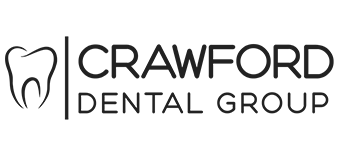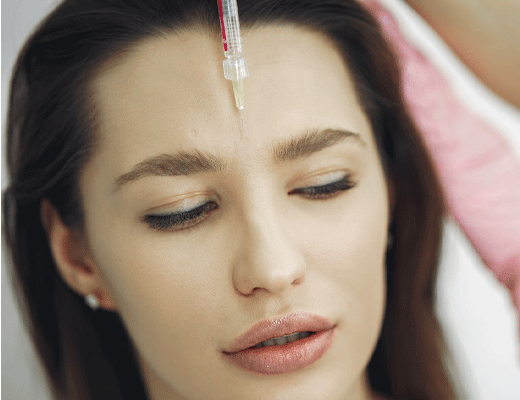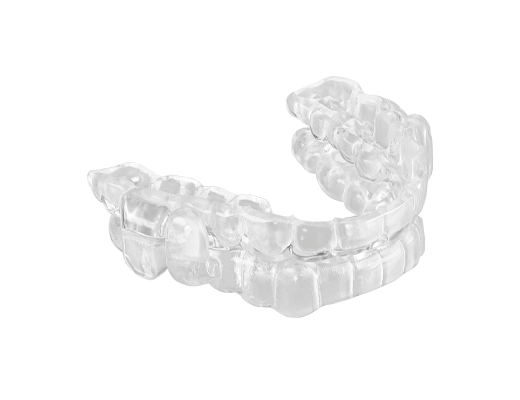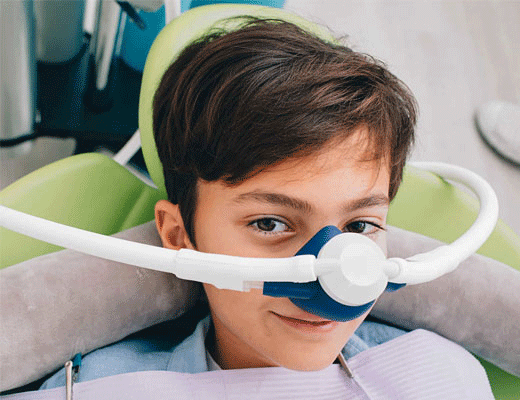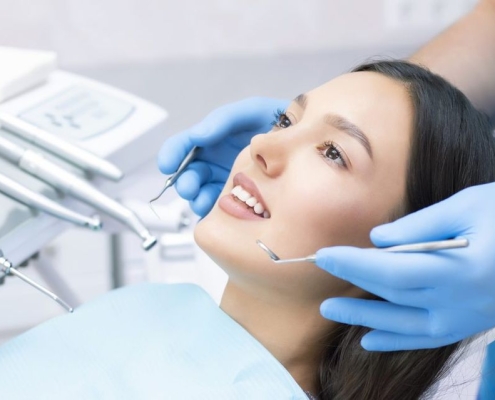Services
Pediatric Care
Bringing your child to the dentist on a regular basis can help your child develop the kind of good oral care habits that they’ll carry with them into adulthood. It is normally recommended that a child begin to have regular check ups and cleanings at two years of age, unless a problem needs addressed earlier. At Crawford Dental Group we can treat your whole family and we enjoy getting to know you personally.
Preventative Care
Preventive dental care is a crucial aspect of maintaining good oral health. It involves regular check-ups, cleanings, and preventive measures to help prevent common dental issues such as cavities, gum disease, and tooth decay.
The skilled team at Crawford Dental Group is proud to serve the community with quality dental care solutions, including preventing more severe and dangerous health issues regarding your oral care.
What is Preventive Dental Care?
Preventive dental care is a comprehensive approach to maintaining good oral health. It includes cleanings, check-ups with your hygienist and dentist, and standard measures to help prevent common dental issues.
Preventive care can help catch and treat problems early on before they become more excruciating and expensive. This can include state-of-the-art technology as well as an experienced hand.
Seeing the dentist on a regular basis can help protect your teeth from a variety of problems including gum disease, gum recession, loose permanent teeth and more. In this way, going to the dentist can save you money and time spent repairing your teeth.
Cosmetic Dentistry
Cosmetic dentistry is a specialized branch of dental care that focuses on improving the aesthetics of teeth, gums, and the overall smile. Through a variety of procedures, cosmetic dentists aim to enhance the appearance of teeth, address imperfections, and create a more attractive and confident smile.
Common Cosmetic Dentistry Procedures
Cosmetic dentistry encompasses a range of procedures designed to address various dental concerns and enhance the overall smile:
Teeth Whitening: Teeth whitening is a popular procedure that lightens the color of teeth, removing stains and discoloration caused by food, beverages, and aging. Various teeth whitening options are available, including professional in-office treatments and at-home whitening kits.
Dental Bonding: Dental bonding involves applying a tooth-colored resin material to the surface of a tooth to restore its shape, size, or color. Bonding can be used to repair chipped or cracked teeth, close gaps between teeth, and even lengthen the appearance of short teeth.
Dental Veneers: Dental veneers are thin, custom-made shells that are bonded to the front surface of teeth to mask imperfections and enhance the appearance of the smile. Veneers can be used to address a variety of cosmetic concerns, such as discoloration, chipped or cracked teeth, misaligned teeth, and gaps between teeth.
Dental Implants: Dental implants can be used as a foundation for cosmetic restorations, such as crowns or bridges, to replace missing teeth and enhance the overall appearance of the smile. Implants provide a natural-looking and durable solution for restoring missing teeth.
General Dentistry
General dentistry is the cornerstone of oral healthcare, encompassing a wide range of preventive, diagnostic, and therapeutic services designed to maintain optimal oral health for individuals of all ages. General dentists are trained to address a broad spectrum of dental concerns, from routine cleanings and examinations to more complex restorative procedures and cosmetic treatments.
Services Provided by General Dentists
General dentists play a crucial role in preventing and treating a variety of oral health conditions, including:
Preventive Care: Regular checkups and cleanings, fluoride treatments, and dental sealants to prevent cavities, gum disease, and other dental problems.
Diagnostic Procedures: Oral examinations, X-rays, and other diagnostic tools to identify and assess dental issues early on.
Restorative Care: Fillings, crowns, bridges, dentures, and root canals to restore the function and aesthetics of damaged or decayed teeth.
Cosmetic Dentistry: Teeth whitening, veneers, and bonding to enhance the appearance of teeth and improve overall smile aesthetics.
Periodontal Care: Scaling and root planing, gum grafting, and other treatments to address gum disease and protect the supporting structures of teeth.
Restorative Dentistry
Restorative dentistry is a specialized branch of dental care that focuses on restoring the function, structure, and aesthetics of teeth that have been damaged, decayed, or lost. Through a variety of procedures, restorative dentists aim to repair or replace damaged teeth, improving both oral health and overall well-being.
Common Restorative Dentistry Procedures
Restorative dentistry encompasses a wide range of procedures, each tailored to address specific dental concerns:
Fillings: Fillings are used to repair cavities, the most prevalent dental problem. Dentists remove the decayed portion of the tooth and fill the cavity with a composite resin material that matches your tooth and restores the tooth structure.
Crowns: Crowns are tooth-shaped caps that are placed over a weakened or damaged tooth to protect it from further damage, improve its appearance, and restore its functionality. Crowns are typically made of porcelain, metal, or a combination of both.
Bridges: Bridges are used to replace missing teeth by anchoring them to the adjacent teeth or implants. Bridges restore chewing ability, prevent shifting of adjacent teeth, and improve facial aesthetics.
Dental Implants: Dental implants are artificial tooth roots that are surgically placed into the jawbone to provide a stable foundation for replacement teeth. Implants offer a permanent and natural-looking solution for missing teeth.
Same Day Crowns
Imagine a chipped tooth, a cracked molar, a sudden dental drama casting a shadow over your day. Traditionally, the fix meant multiple appointments, temporary crowns, and weeks of waiting. But enter CEREC, a revolutionary technology reshaping the dental landscape, offering a shining solution: same-day crowns.
CEREC, standing for Chairside Economical Restoration of Esthetic Ceramics, is a marvel of modern dentistry. It transforms the crown-making process, ditching the waiting game for streamlined efficiency. Instead of sending impressions off to a lab, CEREC lets your dentist become a sculptor in minutes.
How It Works
Capture: A tiny camera scans your tooth, creating a 3D digital image. No messy molds, just high-tech precision.
Design: Like a virtual artist, your dentist sculpts the perfect crown on the computer screen, ensuring a custom fit and natural look.
Mill: The magic happens. A milling machine whirls to life, carving the crown from a block of durable ceramic, right there in the dental chair.
Place: Within an hour, the crown is polished and cemented onto your tooth, restoring your smile and bite in a single visit.
CEREC Benefits
Convenience: No more temporary crowns, dietary restrictions, or juggling appointments. CEREC fits seamlessly into your busy schedule.
Precision: Digital scans eliminate impression errors, leading to better-fitting crowns that protect your tooth and gums.
Strength: These ceramic marvels are built to last, offering durability comparable to traditional crowns.
Orthodontics
Were you born with a straight smile and a perfect bite? If so, you’re one of the lucky ones. For most of us, we must choose orthodontics to correct our teeth. Whether you go for clear aligners or traditional braces, these both can help you find that smile you’ve always wanted!
What Is Orthodontics?
Orthodontics is a form of dentistry that focuses on straightening teeth and fixing bite issues. Braces are one of the most common appliances used in orthodontics. Other popular devices include retainers, tightening bands, and clear aligners.
While most people get orthodontic treatment when they’re younger, these procedures work for all ages. However, treatment during youth is recommended since children’s teeth are easier to move.
Why Choose Orthodontics?
Patients often choose orthodontics to treat the following issues:
- Crooked Teeth
- Overlapping Teeth
- Crowded Teeth
- Rotated Teeth
- Impacted Teeth
- Overbites
- Underbites
If any of these problems affect you, you can find relief quickly! In fact, depending on the severity of the problem, we can help you achieve a perfect smile in as little as a few months! Contact us today to get started.
Periodontal Exams
Gum disease, also known as periodontal disease, isn’t just about swollen gums and bad breath. This chronic inflammatory condition, if left untreated, can lead to tooth loss, bone damage, and even systemic health problems.
Understanding Periodontal Disease
Periodontal disease thrives in bacterial plaque and tartar. These sticky deposits build up around teeth and irritate gums, triggering inflammation. As it advances, gum pockets deepen, creating breeding grounds for bacteria, further escalating.
Treatment
Early Intervention: In the early stage, called gingivitis, prompt action is key. Brushing, flossing religiously, and regular dental cleanings can halt the advancement and even reverse some damage.
Scaling and Root Planing: This deep cleaning involves meticulous removal of plaque and tartar, both above and below the gum line.
Medications: In some cases, your dentist may prescribe antibiotics to eliminate stubborn bacterial pockets.
Progression
If the disease has progressed further, additional tactics might be needed including:
Surgical Options: Gum surgery options like flap surgery or gum grafting can reshape gum tissue and rebuild bone support.
Laser Therapy: In some cases, targeted laser therapy can be used to remove infected gum tissue and promote healing.
Teeth Whitening
There are many different options to whiten your teeth from home bleaching trays to in -office whitening procedures. Home treatments are a cost-effective way to lighten your teeth 2 to 3 shades at your convenience at home. In-office whitening is more of a “deep bleach” procedure intended to lighten the teeth several shades and to treat deep intrinsic stains. For the most effective results this is done in combination with at home bleaching trays worn overnight.
Teeth whitening is a safe, effective, and fast way to brighten your smile. With the help of a dentist at Crawford Dental Group, you can achieve the bright, white smile you’ve always wanted.
Dental Implants
Dental implants are a popular and effective method for replacing missing teeth. They offer numerous advantages over traditional bridges and dentures, including improved durability, function, and aesthetics.
Dental implant restorations can be used to replace a single tooth, multiple teeth, or even all teeth in an arch. The type of restoration chosen will depend on the number of teeth missing and the patient’s specific needs.
Common Procedures
Crowns used to replace single missing teeth. The implant acts as an artificial root, supporting a custom-made crown that closely resembles a natural tooth.
Bridges used to replace multiple missing teeth. Implants are placed on either side of the gap, and a bridge is fixed onto the implants, restoring both the function and appearance of the missing teeth.
Dentures used to replace all or most teeth in an arch. Implant-supported dentures provide a stable and secure fit, eliminating the slipping and discomfort often associated with traditional dentures.
Botox
Botox is a cosmetic treatment that uses botulinum toxin (Botox) to relax the jaw and face muscles. It is used to treat jaw pain, headaches, clenching, and grinding and improve the appearance of wrinkles and fine lines.
The team at Crawford Dental Group is proud to serve the community with quality and premium services, such as Botox, to restore and rejuvenate confidence in your overall appearance..
What is Botox?
Botox is a largely cosmetic treatment used to relax the muscles and tissues in a particular area, usually to reduce the appearance of wrinkles and aging. In addition, Botox has many other approved applications, such as the use of Botox for dental purposes, mainly to manage pain and other issues that can occur. Dental botox is 100% safe and offers excellent results, but you should always consult a dental professional before use, as this can minimize the discomfort you may feel.
Benefits of Dental Botox
Botox is truly an innovation that offers many different benefits. Botox can relieve the pain and discomfort associated with jaw pain, headaches, clenching, and grinding.
Botox can relieve the pain and discomfort associated with jaw pain, headaches, clenching, and grinding. Relaxing the jaw muscles can reduce tension and help prevent the formation of wrinkles and fine lines. The team at Crawford Dental Group offers the best botox treatment to help you restore your quality of life.
Airway Health
Our office offers Home Sleep Studies. You can now test for Obstructive Sleep Apnea in the comfort of your own home. Sleep apnea can contribute to memory loss, weight gain, impotence, headaches, high blood pressure, stroke and other cardiovascular problems. Untreated sleep apnea can lead to a 30 percent or more reduced survivability rate over the course of 20 years. The Apnea home sleep study is a small box that the patient wears around their chest, along with a pulse oximeter and a nasal cannula. The device needs a minimum of 6 hours of recording time. The next day the patient returns the device and our office downloads the readings to a group of sleep physicians who gives each patient a diagnosis, if applicable.
The patient then comes back for a follow up visit with the dentist to review results and talk about treatment options if needed. In this office we have options for treating our patients sleep apnea with oral appliances as an alternative to a CPAP machine. At your next visit ask us about taking home one of our sleep studies!
Here’s a quick link showing how the home sleep study works:
How to use the ApneaLink™ Air Home Sleep Testing Device – YouTube
Sleep Apnea / Snoring
Sleep apnea and snoring may often times be treated with an oral appliance to hold the lower jaw forward while sleeping as an alternative to a CPAP.
Oral Surgery
If a tooth is nonrestorable due to a fracture, large decay, or bone loss, it may need to be extracted. In many circumstances the tooth can be removed in our office under local anesthesia, but sometimes, it will require a referral to an oral surgeon to be removed under general anesthesia.
Endodontics
Endodontics, typically known as root canal therapy, is a procedure that involves removing infected or damaged tooth pulp. This is often done to treat severe pain or infection in a tooth. This procedure allows the patient to keep their tooth as an alternative to an extraction.
